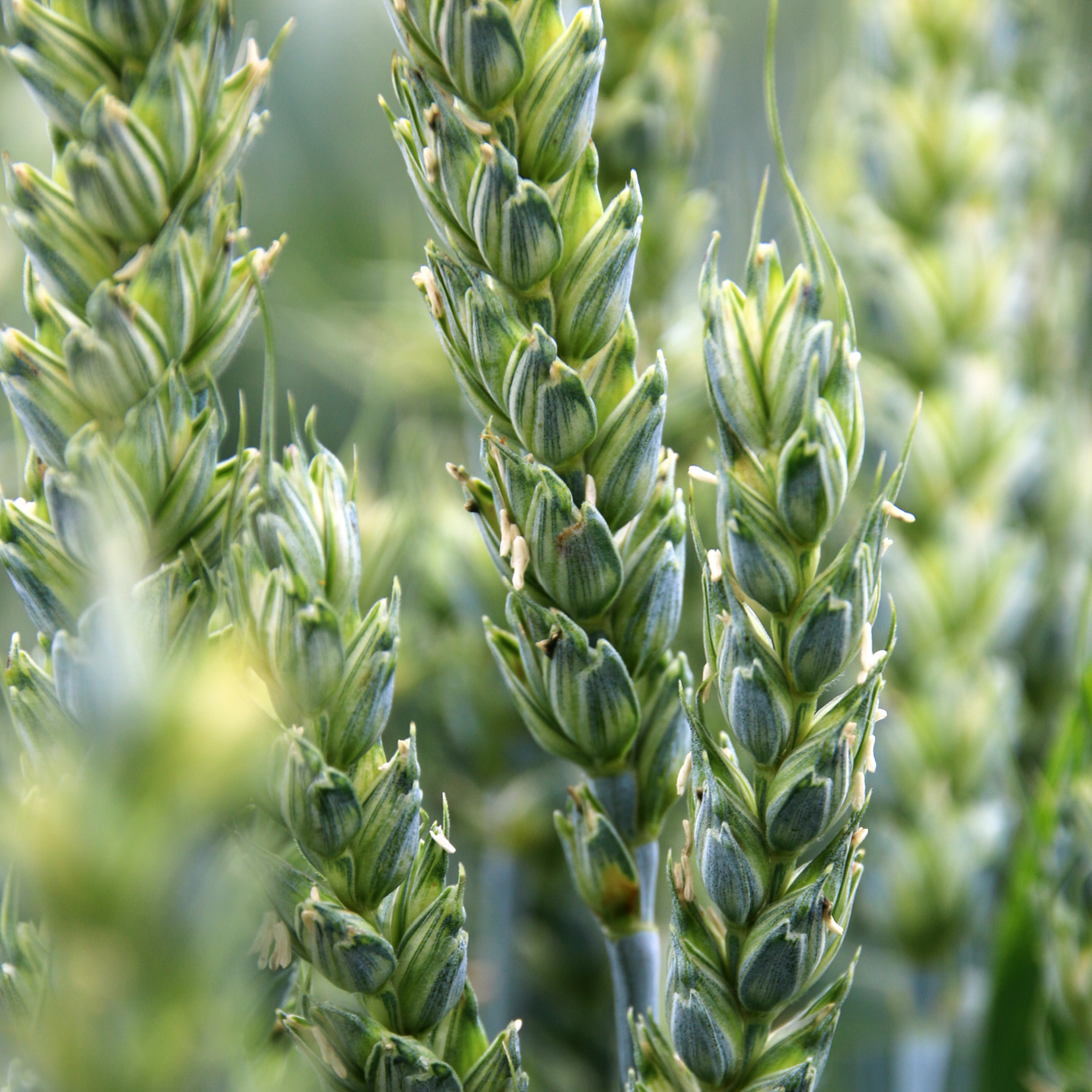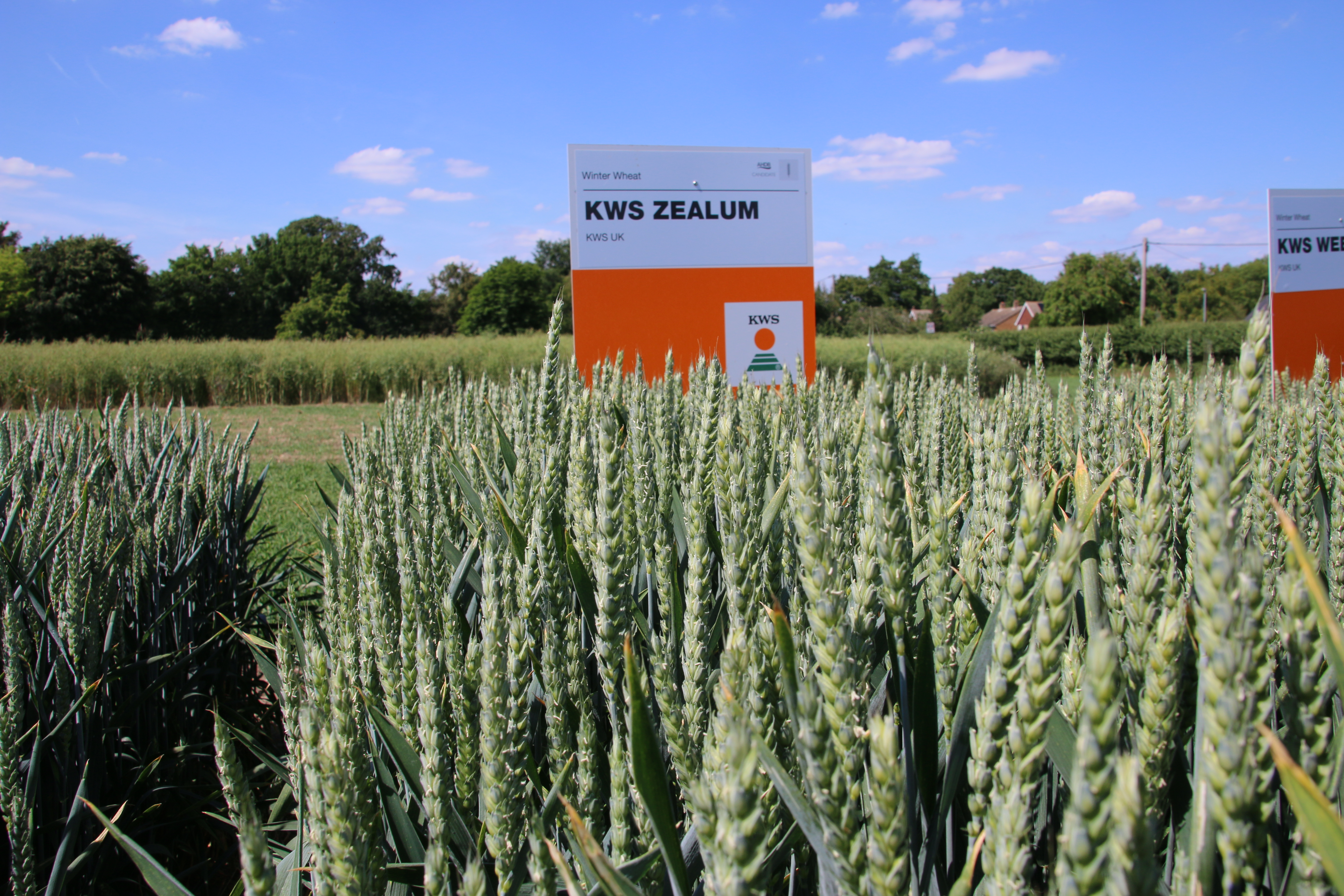Focus on physical properties if you want to maximise the profitability of wheats
Varieties like KWS Dawsum and KWS Extase, which together will account for 30% of all wheat fields harvested in 2023, have built their reputation on consistent high yields and strong agronomics, but that's only telling part of their story, says KWS UK country manager Will Compson.
"Look below the headline figures and you'll see untreated yields of 97% of controls for KWS Extase and 95% for KWS Dawsum and that says a huge amount about their physical strength and overall resilience across several years of very different growing conditions.
"Every year seems to be different now. After some very wet autumn periods in previous years, last year was kinder and somewhat drier, for example, but there were still some very severe cold snaps through the winter.
"As we went into spring, it turned very wet with many areas experiencing double their normal rainfall, which has resulted in high levels of Septoria and T1 and T2 applications being delayed in many cases.
"Then it turned very dry with the June heatwave adding to this and lodging becoming foremost in many peoples' minds during the heavy downpours that accompanied this.
"Although lodging hasn't really been an issue in recent years, it is always a problem to be aware of, particularly as many PGRS seem to be in short supply at the moment..
"Fortunately, varieties like KWS Dawsum and KWS Extase have good standing power with new KWS varieties, such as newly RL-listed varieties like KWS Ultimatum and KWS Zealum, also sharing this feature."
85% of all KWS varieties on the current RL have untreated yields of over 90%. These are exceptional, real-world indications of such varieties' ability to cope with a range of adverse growing conditions.
Breeding for physical properties is becoming increasingly important to KWS in the light of climate change and more variable growing conditions resulting from it, he says.
"Reducing risk in the production cycle is and increasing priority for growers and identifying the features of a variety which will help them achieve this is a key element of this.
"Looking at untreated yield is a good starting point, but this needs to be considered in line with regional information too.
"Twenty years ago in 2003, just 26% of the varieties on the RL had untreated yields over 80% of treated controls, whereas in 2023 it is now 97%.
"Furthermore, 85% of all KWS varieties on the current RL have untreated yields of over 90%. These are exceptional, real-world indications of such varieties' ability to cope with a range of adverse growing conditions."
A variety's standing power and overall physical strength is another good indication of resilience, he points out.
"In 2003, the average lodging resistance with PGR for the top 10 varieties was less than 1% lodged crop whereas in 2023 the top 10 varieties in the ground have an average of over 5% lodging with PGR.
"This indicates that lodging resistance has generally gone down which is worrying, particularly as the RL data is based on the last five years when there hasn't really been a lodging year.
"As well as greater resilience, shorter, stiffer strawed varieties can deliver cash and workload savings resulting from reduced PGR passes, better harvest security and reduced drying costs that often result from lodged crops."
Significant cost benefits
The costs benefit of combining such traits should not be underestimated, he believes.
“Physical traits can simplify management and reduce production costs to a much greater degree than many appreciate.
“Savings in diesel, labour, machinery replacement and better soil condition can be considerable whilst helping producers meet the requirements of integrated pest management (IPM) and environmental legislation much easier.
“It’s too easy to look at good standing power, for example, and think it’s a trait that might save you a bit on growth regulators, but that's only the start.
"There are the initial saving on PGRs, but costs/ha can escalate when you start to factor in extra diesel, labour and machinery hours, he explains.
“The worst-case scenario in a catchy harvest is that it starts to affect next season’s crops due to remedial cultivations or soil damage occurring. This may be a ‘worst case’ but it’s still a risk that could be mitigated by variety choice in the first instance.
Super-stiff KWS Zealum a strong contender
The super-stiff, super-versatile soft Group 4 wheat KWS Zealum is the latest RL-listed wheat to combine strong physical properties and excellent performance across a wide range of challenging growing conditions, says KWS' cereals product manager Dr. Kirsty Richards.
"KWS Zealum is destined to quickly become a first choice for many growers in the East through to Scotland and be attractive in other parts of the UK.
"With just under 40% of the AHDB north region in soft Group 4 varieties, it's a variety with all the key characteristics needed for a northern wheat to perform on farm.
“It's done well in northern distilling markets thanks to consistently good spirit yield and processability in the plant. It may also be suitable for other soft wheat milling applications such as cake production or bioethanol manufacture.”
With a 10.9% protein content across all trials, a Hagberg Falling Number of 218 and a specific weight of 76.7kg/hl, KWS Zealum will also be attractive to growers in other parts of the UK, she adds.
"Most Group 4 soft wheats are grown in the east and west, ending up in the UK’s bioethanol and soft milling sectors, so the variety’s excellent overall package will also benefit growers in those regions thanks to its great combination of yellow rust resistance at 9, OWBM resistance and yield potential
"Fully approved for distilling, KWS Zealum delivers the very best performance in very early and early sown trials.
"The variety’s stiff straw, both with and without PGR, also makes it a useful contender on heavier land or more fertile soils, adding security through to harvest to the soft Group 4 sector."
Variety looking good in the field
In the heart of the Scottish Borders, close to the market town of Kelso, David Fuller-Shapcott is growing 16ha of KWS Zealum on a seed contract for McCreath Simpson & Prentice.
"KWS Zealum came along as an alternative to KWS Basset and the variety’s very stiff straw gives excellent standing power, a very attractive asset when really pushing a crop.
"This season we have 16ha of KWS Zealum which we're growing it in an ‘easy’ field which is situated ninety metres above sea level."
One of the difficulties of farming in this location is that the weather window closes very rapidly, so the first week of October is the latest that David likes to drill, with a cut-off time of mid-October.
"The KWS Zealum was sown on 11th October into land which had been min tilled using the farm’s power harrow-drill combination and a seed rate of 240kg/ha."
The crop emerged very quickly and has looked good ever since, he says.
"Trying to stay ahead of the game in terms of future legislative requirements and market demands, we have implemented a declining Nitrogen curve policy to a maximum of 160kgN/ha applied in liquid form and split 40:60:60.
"In the current Nitrogen climate, being able to grow a 10t/ha crop on just 160kg/t is a good achievement I think."
"By the end of May, the KWS Zealum had not received a fungicide or a PGR and the crop was looking clean and healthy.
"We're happy with progress to date and will be looking for the crop to produce a per-hectare yield ‘in the teens.’"
Why high specific weight is important
Stuart Rowley of Yorkshire-based grain and seed merchants Mortimers says high specific weight is another key physical trait growers need to focus on.
“You can’t change the weather, but you can mitigate against it to a certain degree by choosing a high specific weight variety.
“With a high specific weight variety, even if you lose a couple of points, you should still have something that is of very acceptable quality for virtually any purpose.
“You can get everything else right – protein content, hagberg and cleanliness – but if your wheat fails on specific weight, that’s it.
“With a feed wheat, the tolerances are lower and whilst a specific weight of 69kg/hl might still be marketable, growers will take a significant financial hit.
“You should be OK at 72kg/hl, but for every point below that down to 70kg/hl you’ll probably lose £1/tonne and from 69kg/hl £2/tonne. This could change depending on the year, but the bottom line is that you can lose a lot of money with poor specific weights.
“So, the higher the genetic potential for specific weight, the more likely you are to end up with something that is marketable, even in a bad year.”

